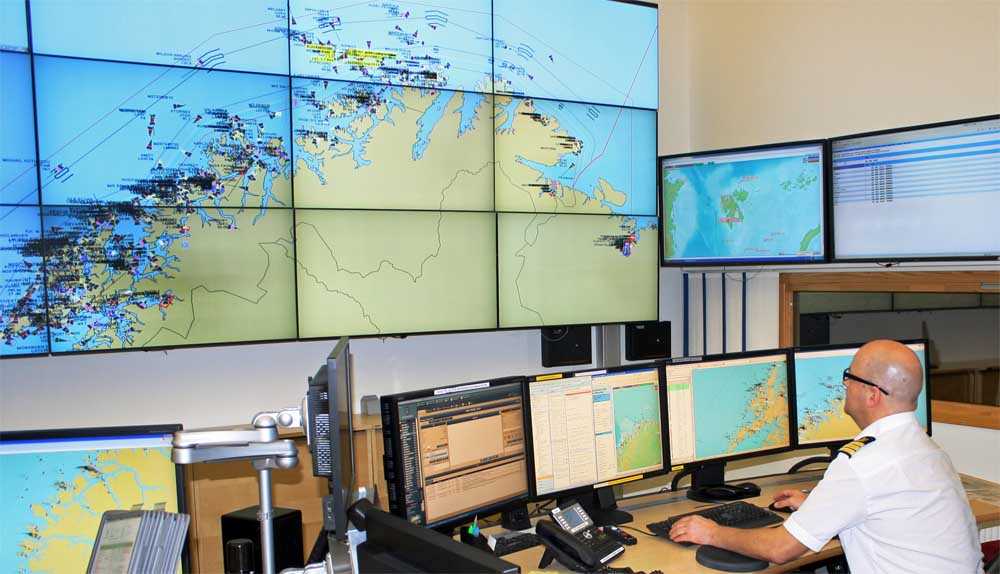A Bering Strait Vessel Traffic Service: Critical Infrastructure for an Opening Arctic (Part II)

The Vardø vessel traffic service (VTS) helps to expose illegal activity on the high seas. Photo: Norwegian Coastal Administration
Assuming a VTS is a next logic step in Arctic infrastructure development, alone it cannot be expected to reduce the risks during transit. While a VTS provides the situational awareness by monitoring, tracking and communicating with vessels, it also needs to have a response capability. The Vardø VTS has an emergency tow response service, as well as, two Rescue Coordination Centers in the North and South of Norway.1) Recall for a moment the Russian Federation’s desire for ten NSR Rescue Centers. But Rescue Centers alone will not be enough to ensure safe passage.
Given the recent environmental catastrophe in the Gulf of Mexico and environmentalists calls for spill response protocols prior to the US Government allowing multinational oil and gas companies to drill in the Arctic, putting appropriate controls in place, to respond in the event of a spill and/or a vessel run aground, would seem reasonable. Fortunately, the Arctic Council appears to be moving toward a Spill Response agreement in the near future. Naturally, as vessel traffic increases, the Bering Strait VTS must also have supporting infrastructure such as aids to navigation, aport facility to harbor emergency tow service vessels and icebreakers, heated hangers and helicopter pads for the Russian Federation Border Guard and/or US Coast Guard air rescue. A strategically placed spill response capability should also be included. All of which would be necessary investments.
Vardø VTS has the following primary tasks:
- Monitor ship movements – record, identify and detect irregularities
- Prevent accidents by maintaining constant dialogue with vessel traffic
- Take action and alert when a situation requires it
- Manage tugboat preparedness Norway
- Monitor the coverage area in the Norwegian economic zone, Svalbard and Jan Mayen
- Navarea 19 coordinator, issuing and sending of navigational warnings
- Assembly and provision of statistics
- 1st line response of the Norwegian Coastal Administration
- Contact in the agreement on international notification of acute pollution with Russia
- Information exchange with Iceland
- National coordinator of Single Hull, reporting to Helsinki Commission/European Maritime Safety Agency
Some of the investments necessary to construct the VTS and accompanying infrastructure would require sizable state expenditures by the United States and the Russian Federation. However, the cooperation that would result could make the investments worthwhile, not to mention the jobs created. And if money were the show stopper, the United States and the Russian Federation could require multinational oil and gas corporations and shipping companies to invest some of their capital to pay down their operating risk to safeguard the environment and the eco-system. These monies could then be applied to a Bering Strait VTS and associated infrastructure. But why should Russia and the US do this?
In the 2009 Arctic Marine Shipping Assessment, Arctic Council states in approving the report agreed “to enhance Arctic marine safety, protect the marine environment and expand Arctic marine infrastructure”.2) Furthermore, in the Tromsø Declaration, the Arctic states noted “that increased marine access and navigation in the Arctic Ocean call for development and implementation of suitable national and international regulations, where appropriate, to advance the safety of Arctic marine shipping, including marine pollution prevention, reduce accident risk and facilitate effective emergency response.”3) Clearly the recent Arctic Council Search and Rescue Agreement represents a first step in making these pledges reality, but a Bering Strait VTS would constitute a substantial leap forward. So what are the relevant benefits to a Bering Strait VTS?
Internationally, the resulting level of cooperation ensuing from bilateral negotiations between the Russian Ministry of Foreign Affairs and the US State Department could serve to further reset the US-Russian relations. Potentially, the Russian Duma may be encouraged to ratify the US-Russia Maritime Boundary. Environmentalists may be less concerned about the risk of oil and gas spills. The US Coast Guard and the Russian Federation Border Guard could better enforce international and national laws.
Insurance companies like Lloyd’s of London who hold maritime liabilities may be more inclined to reduce shipping companies rates, saving companies who use the NSR the money that can then be reinvested. Alternately, as this international waterway opens to international trade the threats to US and Russian security will increase. Having a national presence at the gateway to the Arctic could mitigate potential criminal or hostile acts and deter illicit activity. Finally, having an International Maritime Organization certified Bering Strait VTS fulfills the pledge made by Arctic nations to enhance Arctic marine safety, to protect the marine environment and expand Arctic marine infrastructure.
See also Part I: A Bering Strait Vessel Traffic Service: Critical Infrastructure for an Opening Arctic (Part I)
References